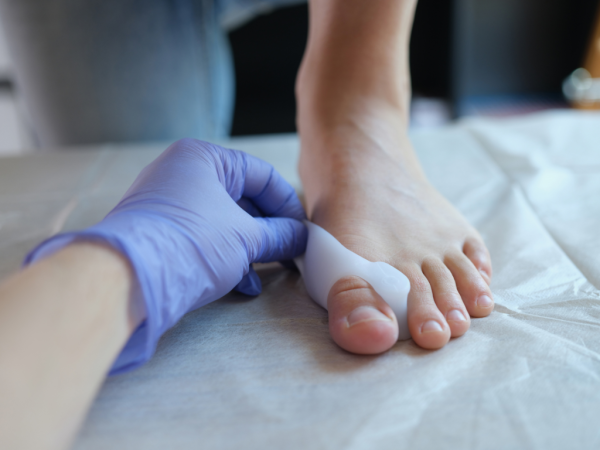Sleep disorders are increasingly common in older adults due to various factors, including changes in sleep patterns, health issues, medications, and psychological challenges. Aging leads to reduced deep sleep, more awakenings, and lighter sleep, resulting in unrefreshing rest.
As we age, sleep disorders tend to become more common, and several factors contribute to this shift. Older adults often face changes in their sleep patterns, such as reduced deep sleep and increased nighttime awakenings. Physical health issues like arthritis, heart disease, and medications can disrupt sleep, making it harder to get quality rest. Additionally, mental health challenges, including anxiety and depression, can play a significant role. These combined factors create a perfect storm, leading many older adults to struggle with sleep, which can significantly impact their overall well-being.
Changes in Sleep Architecture
As people age, their sleep architecture undergoes significant changes. Older adults often experience a decrease in slow-wave sleep, which is crucial for physical restoration and memory consolidation. Instead, they may spend more time in lighter sleep stages, leading to frequent awakenings throughout the night. This altered sleep pattern can result in a feeling of unrefreshing sleep, leaving older adults tired and groggy during the day. Understanding these changes is vital for addressing the underlying causes of sleep disturbances in this population and finding appropriate interventions.
Decreased Slow-Wave Sleep
As individuals age, there is a notable decline in slow-wave sleep, which is essential for physical restoration and cognitive functions. This deep sleep stage plays a key role in recovery and memory processing. When older adults experience less slow-wave sleep, they may not feel fully rested upon waking, impacting their daily energy levels and overall cognitive performance, highlighting the importance of targeted sleep strategies for this demographic.
Increased Light Sleep Stages
Older adults tend to spend more time in light sleep stages, which can lead to frequent awakenings throughout the night. This shift can disrupt their sleep cycles, preventing them from reaching the deeper, more restorative stages of sleep. As a result, they may wake up feeling unrefreshed and fatigued. Recognizing this change is crucial for understanding sleep disturbances and developing effective solutions to improve sleep quality in older adults.
Fragmented Sleep Patterns
The combination of decreased deep sleep and increased awakenings leads to fragmented sleep patterns, which are common among older adults. These disruptions can significantly impact their ability to achieve restorative sleep, leaving them feeling tired and irritable during the day. Fragmented sleep can also affect cognitive functions, such as memory and attention, making it essential to identify strategies that promote continuous, uninterrupted sleep for improved overall health and well-being.
The Impact on Daily Life
Sleep disturbances in older adults can profoundly affect their daily lives. Chronic fatigue from unrefreshing sleep can lead to decreased motivation, reduced social interactions, and increased feelings of depression or anxiety. This decline in overall well-being can further exacerbate sleep issues, creating a cycle that’s hard to break. Addressing sleep quality is essential not only for physical health but also for maintaining mental and emotional well-being in this population.
Strategies for Improvement
To counteract the changes in sleep architecture, older adults can adopt several strategies to improve sleep quality. Establishing a consistent sleep schedule, creating a calming bedtime routine, and ensuring a comfortable sleep environment are effective methods. Additionally, incorporating relaxation techniques and light physical activity can promote better sleep. Understanding these changes allows for tailored interventions, empowering older adults to enhance their sleep and overall quality of life.
Impact of Chronic Health Conditions
Chronic health conditions such as arthritis, diabetes, and cardiovascular diseases can greatly affect sleep quality in older adults. Pain from these conditions often disrupts the ability to fall and stay asleep, leading to a vicious cycle of discomfort and fatigue. Additionally, some medications prescribed for these ailments can have sedative or stimulant effects, further complicating sleep patterns. Addressing these health issues through effective management and treatment is crucial for improving sleep quality, enhancing overall health, and ensuring a better quality of life for older adults.
Medications and Their Side Effects
Many older adults take multiple medications, which can significantly impact sleep. Common medications, such as those for hypertension or depression, may cause side effects like insomnia or excessive daytime sleepiness. Additionally, some drugs can alter sleep cycles, leading to fragmented sleep. Understanding the effects of these medications is essential for healthcare providers to help older adults manage their sleep issues. Regularly reviewing prescriptions and making adjustments can promote better sleep hygiene, allowing older adults to rest more effectively and improve their overall well-being.
Psychological Factors in Sleep Disruptions
Mental health challenges, including anxiety and depression, are prevalent among older adults and can significantly disrupt sleep. Anxiety can lead to racing thoughts and restlessness at night, while depression often manifests as insomnia or excessive sleeping. These psychological factors create a cycle where poor sleep exacerbates mental health issues, further complicating the situation. Addressing mental health through therapy, social support, and possibly medication is crucial for improving sleep quality. A comprehensive approach can help break this cycle, leading to better emotional and physical health outcomes.
Social Isolation and Loneliness
Social isolation and loneliness are common among older adults, especially those living alone. These feelings can contribute to sleep disturbances, as loneliness often leads to increased anxiety and depression. The absence of social interactions can disrupt daily routines, including sleep-wake cycles. Older adults who lack social support may find themselves feeling restless at night and drowsy during the day. Promoting social engagement through community programs and family connections can help mitigate these feelings, leading to improved sleep quality and overall emotional health.
Lifestyle Factors Affecting Sleep
Lifestyle choices, such as diet, exercise, and daily routines, play a significant role in sleep quality for older adults. Poor dietary habits, like high caffeine or sugar intake, can lead to sleep disturbances, while a lack of physical activity can result in increased fatigue and difficulty sleeping. Establishing a regular exercise routine and maintaining a balanced diet can enhance sleep quality and overall health. Simple changes, like reducing caffeine intake in the afternoon and incorporating light exercise, can create a more restful environment and promote better sleep.
Environmental Influences on Sleep Quality
The sleep environment significantly influences the quality of rest for older adults. Factors such as room temperature, noise levels, and lighting can either promote or hinder sleep. For instance, a bedroom that is too bright or noisy can lead to fragmented sleep patterns. Creating a calming sleep environment, with comfortable bedding and reduced distractions, can enhance sleep quality. Simple adjustments like blackout curtains, white noise machines, or maintaining a cool room temperature can make a significant difference in how well older adults sleep.
Importance of Sleep Hygiene
Practicing good sleep hygiene is essential for older adults to improve sleep quality and overall health. This includes establishing a consistent sleep schedule, creating a relaxing bedtime routine, and avoiding screens before bedtime. Encouraging relaxation techniques, such as meditation or gentle stretching, can also promote better sleep. Educating older adults about sleep hygiene can empower them to take control of their sleep patterns. By making small changes to their nightly routines, they can foster healthy sleep habits and enjoy a more restful night’s sleep.
Conclusion
Sleep disorders in older adults are a significant concern that can impact overall health and quality of life. Factors such as changes in sleep architecture, medical conditions, and medications contribute to the prevalence of these disorders. Understanding the importance of healthy sleep patterns is crucial for older adults to maintain their physical and mental well-being.
At Prana Wellness in Tampa, Florida, we are committed to helping our clients navigate sleep-related challenges. If you or a loved one is struggling with sleep issues, don’t hesitate to reach out at 813-592-4275 for support and guidance.
14502 N Dale Mabry Hwy, Tampa, FL 33618
+18135924275
https://pranawellnesstampa.com/
Media Contact
Organization: Prana Wellness, LLC
Contact Person: Prana Wellness, LLC
Website: https://pranawellnesstampa.com/
Email: Send Email
Contact Number: +18135924275
Address:14502 N Dale Mabry Hwy, Tampa, FL 33618
City: Tampa
State: FL
Country:United States
Release id:19151
The post Why SleepDisorders Are More Common in Older Adults appeared first on King Newswire. It is provided by a third-party content provider. King Newswire makes no warranties or representations in connection with it.







